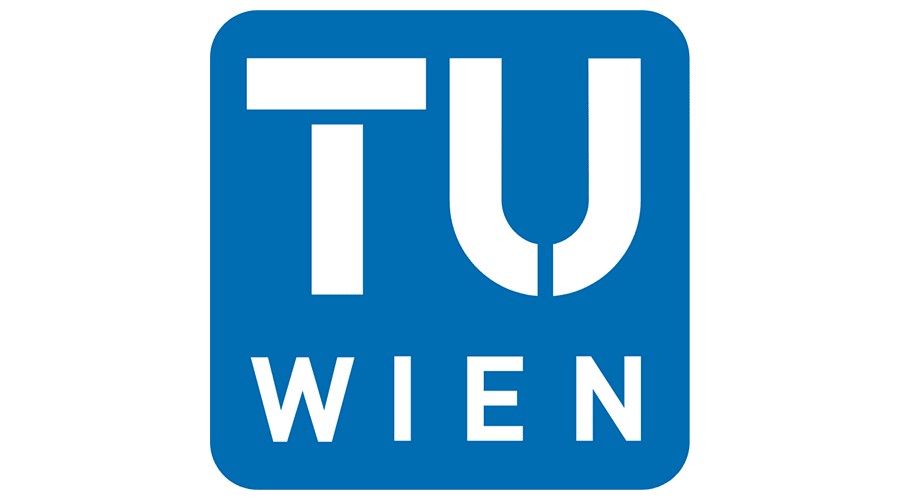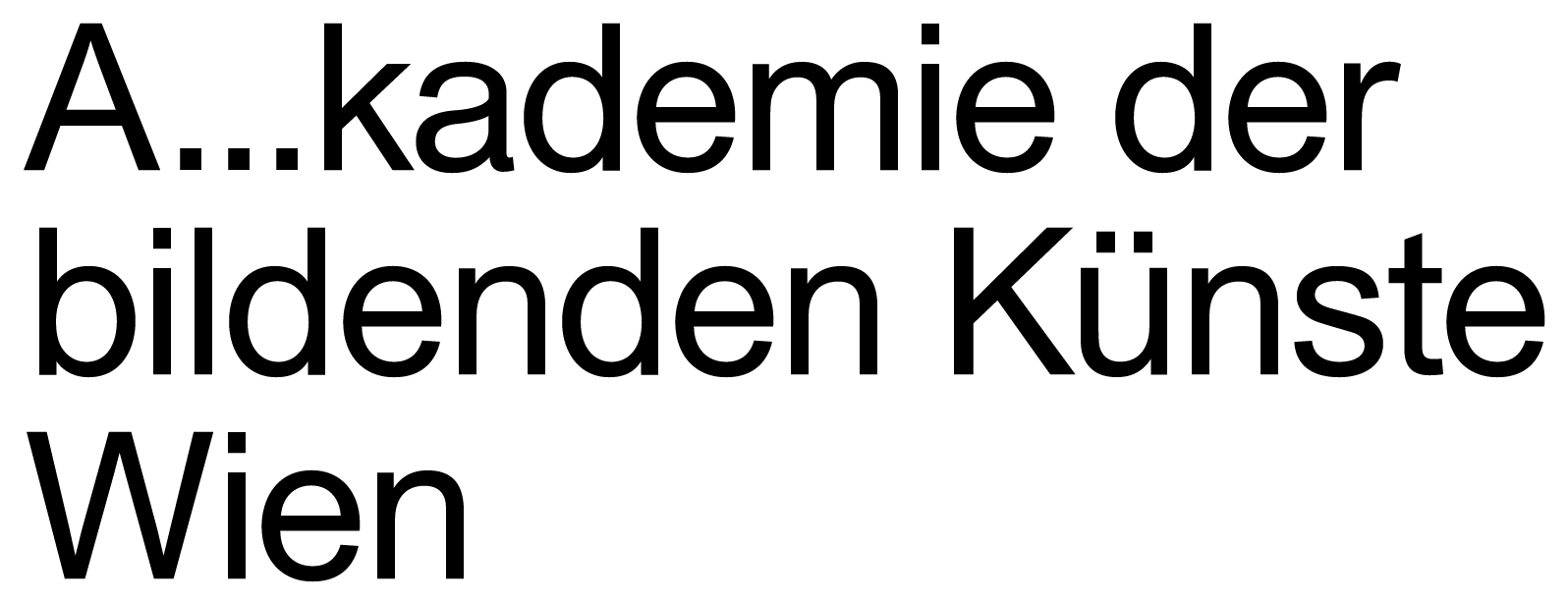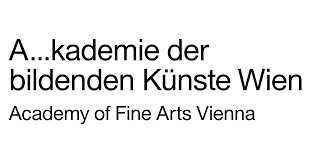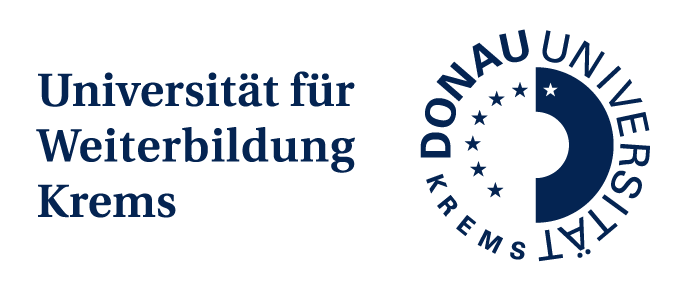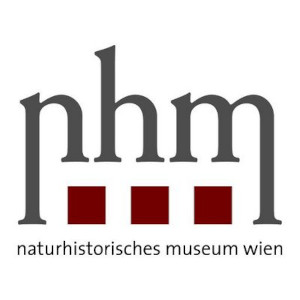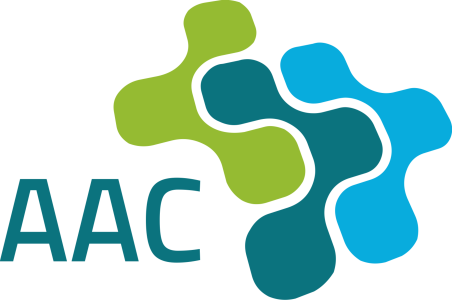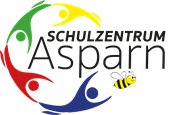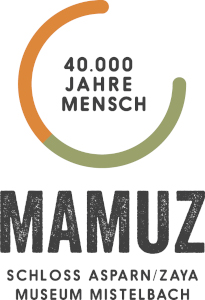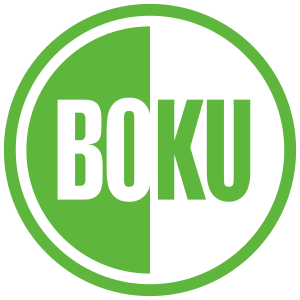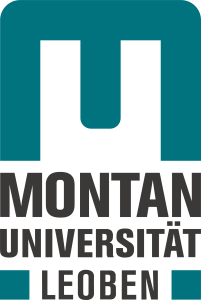On the trail of springs
Spring habitats in the Großes Walsertal Biosphere Reserve
In view of increasing extreme weather events, including periods of drought and consequent water shortages, the protection and knowledge of springs in the Großes Walsertal Biosphere Reserve is becoming increasingly important. In addition to their essential role in water supply, springs are often small but very important habitats for endangered organisms. The pressure to utilise and develop existing springs has increased significantly due to climate change. In order to raise awareness of these special habitats and obtain an overview of the existing spring habitats in the valley, the KLAR! Biosphärenpark Großes Walsertal is launching a citizen science project in cooperation with Life Science AG.
As an introduction, an online workshop will take place on 18 February 2025 from 19:00 to 20:30. Participants will gain exciting insights into the hidden world of springs, their ecological value for highly specialised species and the importance of certain organisms as indicators of water quality. They will also be shown how climate change and increasing utilisation pressure are affecting these sensitive habitats. Finally, the methodology of spring mapping will be presented and a typical mapping day outlined. After the workshop, interested parties will have the opportunity to secure a place on the field trip in summer 2025, during which the methodology will be applied in the field.
Life Science AG has already successfully carried out a citizen science project to record spring habitats in the Black Forest biosphere area and will now transfer this project to the conditions in the Großes Walsertal. The tried-and-tested mapping and evaluation method records not only the location but also characteristics such as spring size, temperature, cultural-historical significance, flora and fauna as well as potential human influences. As an alternative to the tried-and-tested analogue recording, the Qfield app is also being adapted so that walks in the Großes Walsertal can become small research trips.
As a model region for sustainable development, the biosphere reserve bears a special responsibility for the long-term protection of natural springs. We are committed to securing the supply of drinking water and at the same time protecting the habitat for rare species. At the same time, we must ensure that the springs are utilised in the most environmentally friendly way possible to provide water for humans and animals.
If you are interested, please register in advance with our Klar! manager - Lukas Ellensohn at This email address is being protected from spambots. You need JavaScript enabled to view it.. He will send you all further details and the link to the online workshop.

This project fulfils version 1.1 of the quality criteria for citizen science projects on Österreich forscht.
Open Reassembly
Many archaeological artifacts today are only preserved in fragments. Reassembling these parts into their original form is therefore an important but challenging task for archaeology.
Computer-assisted methods can facilitate this task or even partially solve it in some cases. However, due to the usually poor preservation of these artifacts and their potential incompleteness, reliable fully automatic reassembly is rarely possible in practice.
The goal of the Open Reassembly project is to design the solution to such complex tasks as a collaborative process involving many participants and in optimal interplay with computer-assisted methods.
Therefore, we invite Citizen Scientists to be part of this process and work together with other hobby archaeologists to solve these challenging puzzles. On this platform, puzzle experts can virtually reassemble the fragments of an ancient artifact together, evaluate the adjustments made by other participants, and thus earn points for good adjustments.
On their first visit, new users can create a new username in the "New Users" menu and start the puzzle. The system randomly assigns new users to one of several virtual puzzle rooms. Under "Existing Users," they can later continue where they left off.
Further information about the artifact, its archaeological background, and helpful tips for reassembly can be found under the "Artifact Details" menu.
Podcast episode
In Janurary 2025, team members Reinhold Preiner, Peter Houska and Stephan Karl gave insights into the project on the Österreich forscht podcast Wissen macht Leute - you can listen to the episode here (in German).
Gallery
-
 View on virtual stone fragments in Open Reassembly View on virtual stone fragments in Open Reassembly
View on virtual stone fragments in Open Reassembly View on virtual stone fragments in Open Reassembly -
 Detail view on some virtual stone fragments in Open Reassembly Detail view on some virtual stone fragments in Open Reassembly
Detail view on some virtual stone fragments in Open Reassembly Detail view on some virtual stone fragments in Open Reassembly
https://www.citizen-science.at/en/immerse/podcast/tag/culture#sigProId999a219ed1

This project fulfils version 1.1 of the quality criteria for citizen science projects on Österreich forscht.
City Layers
Citizen Mapping as a Practice of City-Making
The project “City Layers: Citizen Mapping as a Practice of City-Making”, funded by the Austrian Science Fund (FWF) introduces a contemporary framework for city-mapping which centres on citizen experience of urban space as an integrative way to contribute to more egalitarian city design. Within the frame of the Citizen Science Award 2023, the City Layers app has been developed in collaboration with students, citizens and researchers all interested in democratising and diversifying how cities are formed.
Hypotheses
The research hypothesises that current data collection methods have prioritised simulated and measurable data, alienating and excluding diverse data sets. City Layers utilises innovative and contemporary data collection methods which allow for the recording of subjective experiences of the city. The project thus proposes a more inclusive and adaptable form of collecting information for urban design, whether it be material or immaterial, based on terms dictated by citizens.
Objectives
The research aims to deepen the engagement between citizens and urban design using the City Layers app by inviting them to identify, record and reflect upon a range of different material and immaterial ‘layers’ of their cities. These include accessibility, noise, safety, climate resilience, aesthetics, amenities and many more. This city mapping app serves as a means of communication between cities and their citizens, generating a contemporary, critical form of data that is collectively generated, managed and cared for.
Approach and methods
Through City Layers – a digitised participatory tool for urban design – citizens are invited to use tags, textual comments, photographs, suggestions and votes to articulate their views on a particular urban surrounding. By recognising and voicing their subjective experiences in specific spaces, citizens procure meaning and values, but also provide valuable data on how these spaces can be improved. Citizens can add thoughts on how urban places can be improved, or they can immerse themselves in the information about their urban surroundings mapped by others. Citizens' contributions are made available online as a form of commons for active use. This innovative mapping tool thus aims to reorganise individual observations into collective knowledge and brings out the strengths of citizen participation in urban design. The collected data is intended to enable a basis for a better dialogue between citizens and urban planners. Therefore, the research recognises the citizen science approach as a democratic and urgent strategy for identifying the essential components which constitute a city.
Picture Gallery
-
 © Lovro Koncar-Gamulin © Lovro Koncar-Gamulin
© Lovro Koncar-Gamulin © Lovro Koncar-Gamulin -
 © Lovro Koncar-Gamulin © Lovro Koncar-Gamulin
© Lovro Koncar-Gamulin © Lovro Koncar-Gamulin -
 © Lovro Koncar-Gamulin © Lovro Koncar-Gamulin
© Lovro Koncar-Gamulin © Lovro Koncar-Gamulin -
 © Lovro Koncar-Gamulin © Lovro Koncar-Gamulin
© Lovro Koncar-Gamulin © Lovro Koncar-Gamulin -
 © Lovro Koncar-Gamulin © Lovro Koncar-Gamulin
© Lovro Koncar-Gamulin © Lovro Koncar-Gamulin
https://www.citizen-science.at/en/immerse/podcast/tag/culture#sigProId5975b3fb95
This project fulfils version 1.1 of the quality criteria for citizen science projects on Österreich forscht.
Stories of Post-extractive F*utures
The shrinking town of Eisenerz lies at the foot of the Erzberg mountain, Austria’s largest and best-known site of extraction of iron ore. The post-industrial town is experiencing a rural exodus, which concerns women in particular. The spatial practices of mining areas have been under-researched using inclusive methods. Mining is predominantly narrated in male, heroic narratives, while counter-narratives of repair, care, reproduction and maintenance are mostly overlooked.
Within this complex field, the project focuses on intersectional feminist perspectives on an area of exhaustion; it will collect feminist post-extractive stories to broaden the perception of mining areas and strengthen the focus on feminist narrations for future perspectives. We ask: Which practices contribute to the continuance of the community? The project shows and discusses the spatial practices of repair amid extraction with multiple actors. We work with local associations to reach diverse groups.
Thinking and knowing with the diverse, often surprising, actors and their practices, the citizen scientists shape the project on several levels: they collect and locate stories of practices, they research private archives, and they report and sometimes even organize. Processes of mutual learning take place in meetings and shared activities, and through the process of transformation into drawings by the East Styrian artist Roswitha Weingrill. Based on collaborative science and an affirmative and inclusive approach, citizens are involved in decisions on many levels, especially concerning their contributions and their representation. The collected knowledge will contribute to creating imaginations of future stories of a liveable community. With the help of artistic methods, these will be illustrated and made accessible in public discussions.
Via strategies of making visible, bringing together, and anticipating and activating futures, and also with the help of artistic tools of knowledge production, this project will show practices as constant reparative counter-practices amid extraction. An ethical, intersectional framework of feminist citizen science will revive the margins of how we know about environmental exploitation to deliver a complex, yet profound, image of a polyphonic Anthropocene that allows for imagining dynamic assemblages after exploitation.
Photo gallery
https://www.citizen-science.at/en/immerse/podcast/tag/culture#sigProId50bd6c7cc8
This project fulfilled version 1.1 of the quality criteria for citizen science projects on Österreich forscht.
Viennese playbills 1930-1939
What is the project about?
The crowdsourcing project "Viennese playbills 1930-1939" is about the metadata capture of the playbills from the holdings of the Vienna City Library from this period. Previously only organized by theater and not indexed individually, during the project these valuable historical sources will become recorded individually and thus discoverable for all. The playbills provide insights into an initially internationally acclaimed and lively Viennese theater world, which was confronted with an increasing restriction of creative scope due to anti-liberal and anti-democratic tendencies.
Since the democratization of knowledge plays a central role in the range of tasks of the Vienna City Library and the previous crowdsourcing projects "Letters 1914-1919" as well as "Letters 1920-1934" have been a great success, we are now again asking the crowd for help in recording our playbills.
The Vienna City Library preserves around 250,000 playbills and program booklets from over 300 Viennese venues, ranging from 1720 to the present. Some of these have been digitized and are freely available in the Digital Library.
How can one contribute?
Participation is open to all interested persons. After registering, you can choose between two tasks: Capture metadata or review information already captured by others. If errors are discovered, they can be changed and a new version created. Two independent confirmations are necessary for a playbill to be classified as correct.
What happens to the results?
The metadata collected is integrated at regular intervals into the Digital Library of the Vienna City Library and will then be individually retrievable and searchable. This means that the playbills can be found by anyone interested and can be filtered by means of various search queries, e.g. by plays that were performed or by individual actors. This is not yet possible.
Crowdsourcing platform crowdsourcing.wien
The project "Viennese playbills 1930-1939" is part of the crowdsourcing platform crowdsourcing.wien – a cooperation of Wien Museum and Vienna City Library. The aim of this joint platform is to make original sources on the history of Vienna from various institutions accessible to all interested persons with the help of the crowd. Because only knowledge that can be read and comprehended can be brought to life and made available for inclusive debate.
More information: crowdsourcing.wien
Gallery
-
 Madonna im Schlafcoupé at the Renaissance-Theater, 1930, Vienna City Library Madonna im Schlafcoupé at the Renaissance-Theater, 1930, Vienna City Library
Madonna im Schlafcoupé at the Renaissance-Theater, 1930, Vienna City Library Madonna im Schlafcoupé at the Renaissance-Theater, 1930, Vienna City Library -
 Nur nit heiraten at the Raimund-Theater, 1931, Vienna City Library Nur nit heiraten at the Raimund-Theater, 1931, Vienna City Library
Nur nit heiraten at the Raimund-Theater, 1931, Vienna City Library Nur nit heiraten at the Raimund-Theater, 1931, Vienna City Library -
 Sissy at the Theater an der Wien, 1932, Vienna City Library Sissy at the Theater an der Wien, 1932, Vienna City Library
Sissy at the Theater an der Wien, 1932, Vienna City Library Sissy at the Theater an der Wien, 1932, Vienna City Library -
 Tosca at the Volksoper Wien, 1933, Vienna City Library Tosca at the Volksoper Wien, 1933, Vienna City Library
Tosca at the Volksoper Wien, 1933, Vienna City Library Tosca at the Volksoper Wien, 1933, Vienna City Library -
 Schule für Steuerzahler at the Volkstheater Wien, 1935, Vienna City Library Schule für Steuerzahler at the Volkstheater Wien, 1935, Vienna City Library
Schule für Steuerzahler at the Volkstheater Wien, 1935, Vienna City Library Schule für Steuerzahler at the Volkstheater Wien, 1935, Vienna City Library -
 Gespenster at the Schönbrunner Schlosstheater, 1936, Vienna City Library Gespenster at the Schönbrunner Schlosstheater, 1936, Vienna City Library
Gespenster at the Schönbrunner Schlosstheater, 1936, Vienna City Library Gespenster at the Schönbrunner Schlosstheater, 1936, Vienna City Library -
 Der Meineidbauer at the Theater der Jugend, 1938, Vienna City Library Der Meineidbauer at the Theater der Jugend, 1938, Vienna City Library
Der Meineidbauer at the Theater der Jugend, 1938, Vienna City Library Der Meineidbauer at the Theater der Jugend, 1938, Vienna City Library -
 Der Schrecken der Saison at the Neuen Wiener Operettentheater, 1939, Vienna City Library Der Schrecken der Saison at the Neuen Wiener Operettentheater, 1939, Vienna City Library
Der Schrecken der Saison at the Neuen Wiener Operettentheater, 1939, Vienna City Library Der Schrecken der Saison at the Neuen Wiener Operettentheater, 1939, Vienna City Library
https://www.citizen-science.at/en/immerse/podcast/tag/culture#sigProIdbbcf8f1c25

This project fulfils version 1.1 of the quality criteria for citizen science projects on Österreich forscht.
Writing history: Letters 1920–1934
What is the project about?
The crowdsourcing project "Letters 1920-1934" is about the transcription of the unique letter collection of the Vienna City Library from this period. In contrast to historical printed works, which are now subjected to automatic full-text recognition as standard, this is still not so easy to do for manuscripts - especially when the documents come from many different writers, as in this case. Since the democratization of knowledge plays a central role in the range of tasks of the Vienna City Library and the pilot project "Letters 1914-1919" has been a great success, we are again asking the crowd for help in indexing the content.
The Vienna City Library will digitize all correspondence - more than 200,000 items - by 2025 and make them freely available in the Digital Library in compliance with copyright law. Due to the alphabetical approach, the crowdsourcing project's holdings will successively expand up to the letter Z.
How can one contribute?
Participation is open to all interested persons. After registering, you can choose between two tasks: Transcribe letters or check letters already transcribed by others. If errors are discovered, they can be changed and a new version created. Three independent confirmations are necessary for a transcription to be classified as correct.
What happens to the results?
The finished transcriptions are integrated into the Digital Library of the Vienna City Library at regular intervals and can then be retrieved and searched at any time. This makes the contents of the letters accessible to all interested persons - something that was previously reserved for a limited circle of experts.
Crowdsourcing platform crowdsourcing.wien
The project "Letters 1920-1934" is part of the crowdsourcing platform crowdsourcing.wien – a cooperation of Wien Museum and Vienna City Library. The aim of this joint platform is to make original sources on the history of Vienna from various institutions accessible to all interested persons with the help of the crowd. Because only knowledge that can be read and comprehended can be brought to life and made available for inclusive debate.
More information: crowdsourcing.wien
Podcast episode
In July 2023, project coordinator Alexandra Egger was guest on the Österreich forscht podcast Wissen macht Leute - you can listen to the episode here (in German).
Picture gallery:
-
 Letter from Maria Herz to Elise Richter, 21.6.1921, HIN-108648, Vienna City Library Letter from Maria Herz to Elise Richter, 21.6.1921, HIN-108648, Vienna City Library
Letter from Maria Herz to Elise Richter, 21.6.1921, HIN-108648, Vienna City Library Letter from Maria Herz to Elise Richter, 21.6.1921, HIN-108648, Vienna City Library -
 Letter from Marianne Hainisch to Rudolf Beer for the Austrian Mother's Day Committee, May 1932, HIN-116120, Vienna City Library Letter from Marianne Hainisch to Rudolf Beer for the Austrian Mother's Day Committee, May 1932, HIN-116120, Vienna City Library
Letter from Marianne Hainisch to Rudolf Beer for the Austrian Mother's Day Committee, May 1932, HIN-116120, Vienna City Library Letter from Marianne Hainisch to Rudolf Beer for the Austrian Mother's Day Committee, May 1932, HIN-116120, Vienna City Library -
 Letter from Josef Jarno to the management of the German Volkstheater [Rudolf Beer], 2.12.1927, HIN-116144, Vienna City Library Letter from Josef Jarno to the management of the German Volkstheater [Rudolf Beer], 2.12.1927, HIN-116144, Vienna City Library
Letter from Josef Jarno to the management of the German Volkstheater [Rudolf Beer], 2.12.1927, HIN-116144, Vienna City Library Letter from Josef Jarno to the management of the German Volkstheater [Rudolf Beer], 2.12.1927, HIN-116144, Vienna City Library -
 Letter from Marie Eugenie delle Grazie to Adele Strauß, 27.12.1920, HIN-120252, Vienna City Library Letter from Marie Eugenie delle Grazie to Adele Strauß, 27.12.1920, HIN-120252, Vienna City Library
Letter from Marie Eugenie delle Grazie to Adele Strauß, 27.12.1920, HIN-120252, Vienna City Library Letter from Marie Eugenie delle Grazie to Adele Strauß, 27.12.1920, HIN-120252, Vienna City Library -
 Letter from Rudolf Goldscheid to Rosa Mayreder, 29.7.1928, HIN-120387, Vienna City Library Letter from Rudolf Goldscheid to Rosa Mayreder, 29.7.1928, HIN-120387, Vienna City Library
Letter from Rudolf Goldscheid to Rosa Mayreder, 29.7.1928, HIN-120387, Vienna City Library Letter from Rudolf Goldscheid to Rosa Mayreder, 29.7.1928, HIN-120387, Vienna City Library -
 Letter from Marianne Hainisch to Rosa Mayreder, 11.2.1933, HIN-121134, Vienna City Library Letter from Marianne Hainisch to Rosa Mayreder, 11.2.1933, HIN-121134, Vienna City Library
Letter from Marianne Hainisch to Rosa Mayreder, 11.2.1933, HIN-121134, Vienna City Library Letter from Marianne Hainisch to Rosa Mayreder, 11.2.1933, HIN-121134, Vienna City Library -
 Letter from August Heymann to Artaria and Compagnie, 5.6.1921, HIN-76007, Vienna City Library Letter from August Heymann to Artaria and Compagnie, 5.6.1921, HIN-76007, Vienna City Library
Letter from August Heymann to Artaria and Compagnie, 5.6.1921, HIN-76007, Vienna City Library Letter from August Heymann to Artaria and Compagnie, 5.6.1921, HIN-76007, Vienna City Library -
 Letter from Franz Eichert to Marie Eugenie delle Grazie, 31.10.1920, HIN-89136, Vienna City Library Letter from Franz Eichert to Marie Eugenie delle Grazie, 31.10.1920, HIN-89136, Vienna City Library
Letter from Franz Eichert to Marie Eugenie delle Grazie, 31.10.1920, HIN-89136, Vienna City Library Letter from Franz Eichert to Marie Eugenie delle Grazie, 31.10.1920, HIN-89136, Vienna City Library
https://www.citizen-science.at/en/immerse/podcast/tag/culture#sigProIdd57757c8f5
This project fulfils version 1.1 of the quality criteria for citizen science projects on Österreich forscht.
Salon of Open Secrets
It is an open secret that hardware operating on our smart devices contains not only plastic, but also conflict materials such as tungsten, tin, tantulum and gold. Technology is therefore not neutral. These resources are mined in conflict regions, assembled to electric circuits under harmful labour conditions and mostly ending up in contaminating landfills. This pollution is best understood as an enactment of ongoing colonial relations to Land.
Arts-based research methods seize artistic practice to unpack complexity. Through opening up our artistic research project to citizens we want to make this phenomenon tangible. Intersecting Art and Science needs to be an experience of empowerment, of encouragement to find new ways.
This Citizen Science projecttackles sensitive issues through an online game that introduces the player to alternative technologies. Participants in our workshops (at the Technisches Museum Wien, the Academy of Fine Arts Vienna children’s university, Maker Fair Vienna and three Viennese schools) can become players and navigate through different scenes to meet specific characters as avatars. These avatars represent real people from around the world, collaborators in our main research project. Through this form of interactive storytelling young people are invited to become inventors of green and fair hardware themselves, to network among each other and transform their ideas into actual prototypes in the next phase of the project.
Through the term Ethical Hardware we want to describe technology that does not harm the environment, but embraces restorative practices for the benefit of nature and inhabitants alike.
There are strong social movements among teenage, female* and non-binary creatives who share similar values (Extinction Rebellion, Fridays For Future). Our Citizen Science Project addresses the lack of communication between academia and the youth movement. We would like to explore the creativity and transformative work performed by young citizens, specifically from minorities, by offering a playful entry point to our research. We hope that the visions contributed by CSs will transform our theoretical definition of what imagining future technologies entails, and vice versa give participants the chance to discover alternative futures. This way together we hope to gain the necessary strengths to face this crisis.
Our research team composed by artists researchers Stefanie Wuschitz and Patrícia J. Reis at the Academy of Fine Arts in Vienna and the citizen scientists will together with the Technisches Museum Wien (TMW), our national research partner, make the research results operative for use in classrooms and after school programs.
This project fulfils version 1.1 of the quality criteria for citizen science projects on Österreich forscht.
Writing History: Letters 1914-1919
What is the project about?
The crowdsourcing project "Letters 1914-1919" is about the transcription of the unique letter collection of the Vienna City Library from this period. In contrast to historical printed works, which are now subjected to automatic full-text recognition as standard, this is still not so easy to do for manuscripts - especially when the documents come from many different writers, as in this case. Since the democratization of knowledge plays a central role in the range of tasks of the Vienna City Library and only readable and comprehensible knowledge can be brought to life, the idea arose to ask the crowd for help in indexing the content. The historically significant period from 1914 to 1919 was chosen as the starting point.
The Vienna City Library will digitize all correspondence - more than 200,000 items - by 2025 and make them freely available in the Digital Library in compliance with copyright law. Due to the alphabetical approach, the crowdsourcing project's holdings will successively expand up to the letter Z.
How can one contribute?
Participation is open to all interested persons. After registering, you can choose between two tasks: Transcribe letters or check letters already transcribed by others. If errors are discovered, they can be changed and a new version created. Three independent confirmations are necessary for a transcription to be classified as correct.
What happens to the results?
The finished transcriptions are integrated into the Digital Library of the Vienna City Library at regular intervals and can then be retrieved and searched at any time. This makes the contents of the letters accessible to all interested persons - something that was previously reserved for a limited circle of experts.
Crowdsourcing platform crowdsourcing.wien
The project "Letters 1914-1919" is part of the crowdsourcing platform crowdsourcing.wien - a cooperation of Wien Museum and Vienna City Library. The aim of this joint platform is to make original sources on the history of Vienna from various institutions accessible to all interested persons with the help of the crowd. Because only knowledge that can be read and comprehended can be brought to life and made available for inclusive debate.
More information: New platform crowdsourcing.wien and "Letters 1914-1919" www.wienbibliothek.at/ueber-uns/presse/presseaussendungen/neue-plattform-crowdsourcingwien-briefe-1914-1919
Podcast episode
In July 2023, project coordinator Alexandra Egger was guest on the Österreich forscht podcast Wissen macht Leute - you can listen to the episode here (in German).
Picture gallery
-
 Letter from Franz Josef Böhm to Marie von Ebner-Eschenbach, 24.4.1914, HIN-130022, Vienna City Library Letter from Franz Josef Böhm to Marie von Ebner-Eschenbach, 24.4.1914, HIN-130022, Vienna City Library
Letter from Franz Josef Böhm to Marie von Ebner-Eschenbach, 24.4.1914, HIN-130022, Vienna City Library Letter from Franz Josef Böhm to Marie von Ebner-Eschenbach, 24.4.1914, HIN-130022, Vienna City Library -
 Letter from Herberg Eulenberg to Franz Servaes, 13.6.1917, HIN-137743, Vienna City Library Letter from Herberg Eulenberg to Franz Servaes, 13.6.1917, HIN-137743, Vienna City Library
Letter from Herberg Eulenberg to Franz Servaes, 13.6.1917, HIN-137743, Vienna City Library Letter from Herberg Eulenberg to Franz Servaes, 13.6.1917, HIN-137743, Vienna City Library -
 Postcard from Raoul Auernheimer to Johannes Wilhelm Auernheimer from Constantinople, 8.5.1914, HIN-154569, Vienna City Library Postcard from Raoul Auernheimer to Johannes Wilhelm Auernheimer from Constantinople, 8.5.1914, HIN-154569, Vienna City Library
Postcard from Raoul Auernheimer to Johannes Wilhelm Auernheimer from Constantinople, 8.5.1914, HIN-154569, Vienna City Library Postcard from Raoul Auernheimer to Johannes Wilhelm Auernheimer from Constantinople, 8.5.1914, HIN-154569, Vienna City Library -
 Letter from Friedrich Bitterlich an Richard Weiskirchner, 26.3.1915, HIN-214005, Vienna City Library Letter from Friedrich Bitterlich an Richard Weiskirchner, 26.3.1915, HIN-214005, Vienna City Library
Letter from Friedrich Bitterlich an Richard Weiskirchner, 26.3.1915, HIN-214005, Vienna City Library Letter from Friedrich Bitterlich an Richard Weiskirchner, 26.3.1915, HIN-214005, Vienna City Library -
 Letter from Richard Beer-Hofmann to Theodor Reik, 23.11.1917, HIN-247438, Vienna City Library Letter from Richard Beer-Hofmann to Theodor Reik, 23.11.1917, HIN-247438, Vienna City Library
Letter from Richard Beer-Hofmann to Theodor Reik, 23.11.1917, HIN-247438, Vienna City Library Letter from Richard Beer-Hofmann to Theodor Reik, 23.11.1917, HIN-247438, Vienna City Library -
 Letter from Peter Altenberg to Margarete Frenzel, 27.9.1917, HIN-248841, Vienna City Library Letter from Peter Altenberg to Margarete Frenzel, 27.9.1917, HIN-248841, Vienna City Library
Letter from Peter Altenberg to Margarete Frenzel, 27.9.1917, HIN-248841, Vienna City Library Letter from Peter Altenberg to Margarete Frenzel, 27.9.1917, HIN-248841, Vienna City Library -
 Letter from Lily Braun to Friedrich Umlauft, 1.4.1914, HIN-35245, Vienna City Library Letter from Lily Braun to Friedrich Umlauft, 1.4.1914, HIN-35245, Vienna City Library
Letter from Lily Braun to Friedrich Umlauft, 1.4.1914, HIN-35245, Vienna City Library Letter from Lily Braun to Friedrich Umlauft, 1.4.1914, HIN-35245, Vienna City Library -
 Letter from Leo Ascher to Ben Tieber, 9.9.1918, HIN-39713, Vienna City Library Letter from Leo Ascher to Ben Tieber, 9.9.1918, HIN-39713, Vienna City Library
Letter from Leo Ascher to Ben Tieber, 9.9.1918, HIN-39713, Vienna City Library Letter from Leo Ascher to Ben Tieber, 9.9.1918, HIN-39713, Vienna City Library -
 Letter from Marie von Ebner-Eschenbach to Auguste Wilbrandt-Baudius, 25.1.1914, HIN-56820, Vienna City Library Letter from Marie von Ebner-Eschenbach to Auguste Wilbrandt-Baudius, 25.1.1914, HIN-56820, Vienna City Library
Letter from Marie von Ebner-Eschenbach to Auguste Wilbrandt-Baudius, 25.1.1914, HIN-56820, Vienna City Library Letter from Marie von Ebner-Eschenbach to Auguste Wilbrandt-Baudius, 25.1.1914, HIN-56820, Vienna City Library -
 Letter from Henriette von Bombelles to Richard von Kralik, 13.4.1914, HIN-97626, Vienna City Library Letter from Henriette von Bombelles to Richard von Kralik, 13.4.1914, HIN-97626, Vienna City Library
Letter from Henriette von Bombelles to Richard von Kralik, 13.4.1914, HIN-97626, Vienna City Library Letter from Henriette von Bombelles to Richard von Kralik, 13.4.1914, HIN-97626, Vienna City Library
https://www.citizen-science.at/en/immerse/podcast/tag/culture#sigProId1358efc294
This project fulfils version 1.1 of the quality criteria for citizen science projects on Österreich forscht.
The Psychological is Participatory
Counselling centres for women* are important institutions that have been founded since the 1980s by the second women's movement. In the project, researchers are conducting research together with counsellors and clients of Viennese women's* counselling centres. We are interested in the life stories of women* who seek help at counselling centres. How can women lead a good life in this society today and what role can women's counselling play in this? In workshops, questions and methods are developed together with the project partners. The women* and the counsellors are guided to document their knowledge and experiences in the form of narrated stories or/and with visual methods. The use of a critical participatory action approach enables both counsellors and clients to reflect on changes that have occurred through a feminist, psychological counselling process.
The perspective of women clients has very rarely been considered in the history of psychology. Especially structurally disadvantaged women* are often not heard, e.g. migrant women or single parents affected by poverty. Research with clients aims to empower women* and to explore with them how social circumstances have shaped their lives.

"The Psychological is Participatory - Feminist critical participatory action research with women's counselling centres and their clients" (2022-2023), funded by the Austrian Science Fund FWF (TCS 112 Top Citizen Science) and co-financed by the Women and Family Department of the Arbeiterkammer.
Project management: Ass.-Prof. Dr. Nora Ruck
Project team: Dr. Barbara Rothmüller, Julia Struppe-Schanda, MSc.
In the project we are conducting research together with Dr. Bettina Zehetner from the counselling centre Frauen* beraten Frauen* and Dr. Sigrid Awart and Dr. Andrea Kaiser-Horvath from the counselling centre Peregrina as well as with 12 clients from both counselling centres*. Prof. Michelle Fine & Prof. María Elena Torre (CUNY), Prof. Thomas Stefan (Postdam) and Prof. Alexandra Rutherford (Toronto) advise us on the Advisory Board of the project. The project is scheduled to be completed in December 2023.
*Participation is restricted to these clients.
Podcast episode
In April 2025, Nora Ruck was a guest on the Österreich forscht podcast Wissen macht Leute - you can listen to the episode here (in German).
This project fulfils version 1.1 of the quality criteria for citizen science projects on Österreich forscht.
United by Crisis?
Participate in archaeological field surveys and/or in cleaning, documenting & interpreting archaeological finds.
A transdisciplinary look at the early Neolithic communities in the Schletz settlement cluster
The project aims to explore the surroundings of the famous Neolithic settlement of Asparn/Schletz (Lower Austria). Numerous human remains suggest a violent attack on this site in the Late Linear Pottery Culture, approx. 7.000 years ago.
Due to its size and earthworks, we assume that Schletz was the central site of a cluster of smaller settlements in surrounding region. By researching these settlements, we hope, among other things, to increase our knowledge on the background of the massacre and on the origin of the people who died in Schletz.
We cordially invite you to work with us as a Citizen Scientist!
In the project, we are searching for Neolithic finds (pottery, stone tools, etc.) at known or suspected sites near Asparn/Schletz together with interested people and collectors. During our surveys, we go over the fields at regular intervals and map the findings that we discover. Later on, we clean them together und create a scientific documentation and evaluation. Here you can find further information on how you can participate as a Citizen Scientist. However, as we have planned a format of intensive cooperation, we have reached the maximum number of Citizen Scientists that can participate in the project. Nevertheless, we can still offer you to join the waiting list for the participation in the project (or possible follow-up projects).
In another part of the project, local middle school students extract and process soil samples from the area of the LPC sites to create an isoscape (= isotope landscape). Through a comparison with Sr isotope ratios of the human remains, this will allow a discussion of whether the people that died in the massacre might have grown up locally or not.
Citizen Science Seminar
In January 2025, Johanna Irrgeher, Julia Längauer and Jakob Maurer gave a lecture on 'The Neolithic "Massacre of Asparn/Schletz" - transdisciplinary research with citizen scientists' at the Citizen Science Seminar of BOKU University (in German).
Project partners & cooperation partners
Picture gallery:
-
 Zwentendorf, possible early Neolithic site near to the Zaya-river Zwentendorf, possible early Neolithic site near to the Zaya-river
Zwentendorf, possible early Neolithic site near to the Zaya-river Zwentendorf, possible early Neolithic site near to the Zaya-river -
 Victims of a Neolithic massacre were discovered during archaeological excavations in Asparn/Schletz Victims of a Neolithic massacre were discovered during archaeological excavations in Asparn/Schletz
Victims of a Neolithic massacre were discovered during archaeological excavations in Asparn/Schletz Victims of a Neolithic massacre were discovered during archaeological excavations in Asparn/Schletz -
 Together with Citizen Scientists we do systematic “line walking” for the identification of Neolithic sites Together with Citizen Scientists we do systematic “line walking” for the identification of Neolithic sites
Together with Citizen Scientists we do systematic “line walking” for the identification of Neolithic sites Together with Citizen Scientists we do systematic “line walking” for the identification of Neolithic sites -
 The finds are carefully packed; the find spots are precisely documented with GPS The finds are carefully packed; the find spots are precisely documented with GPS
The finds are carefully packed; the find spots are precisely documented with GPS The finds are carefully packed; the find spots are precisely documented with GPS -
 Newly discovered, unwashed finds „fresh from the field” Newly discovered, unwashed finds „fresh from the field”
Newly discovered, unwashed finds „fresh from the field” Newly discovered, unwashed finds „fresh from the field” -
 Early Neolithic stone tools and potsherds from the Zwentendorf-Hofwiese site Early Neolithic stone tools and potsherds from the Zwentendorf-Hofwiese site
Early Neolithic stone tools and potsherds from the Zwentendorf-Hofwiese site Early Neolithic stone tools and potsherds from the Zwentendorf-Hofwiese site -
 Early Neolithic house (house model in MAMUZ Schloss Asparn/Zaya) Early Neolithic house (house model in MAMUZ Schloss Asparn/Zaya)
Early Neolithic house (house model in MAMUZ Schloss Asparn/Zaya) Early Neolithic house (house model in MAMUZ Schloss Asparn/Zaya) -
 Soil samples are taken by middle school students for the creation of an isotope map Soil samples are taken by middle school students for the creation of an isotope map
Soil samples are taken by middle school students for the creation of an isotope map Soil samples are taken by middle school students for the creation of an isotope map -
 To research the origin of the dead of Schletz, chemical analysis is done on soil samples and human teeth To research the origin of the dead of Schletz, chemical analysis is done on soil samples and human teeth
To research the origin of the dead of Schletz, chemical analysis is done on soil samples and human teeth To research the origin of the dead of Schletz, chemical analysis is done on soil samples and human teeth -
 The core team of the project with scientists from different disciplines is looking forward to working together! The core team of the project with scientists from different disciplines is looking forward to working together!
The core team of the project with scientists from different disciplines is looking forward to working together! The core team of the project with scientists from different disciplines is looking forward to working together!
https://www.citizen-science.at/en/immerse/podcast/tag/culture#sigProId0cf662b906
The project is funded by:
This project fulfils version 1.1 of the quality criteria for citizen science projects on Österreich forscht.


